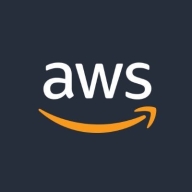

Amazon CloudWatch and Elastic Observability are key competitors in monitoring and observability tools. Elastic Observability appears to have the upper hand due to its advanced features, despite CloudWatch's strong user satisfaction regarding pricing and customer support.
Features: Amazon CloudWatch offers seamless integration with AWS services, providing efficient monitoring of applications and resources. Users benefit from real-time performance monitoring and detailed metrics. Elastic Observability provides robust analytics and handles a wide range of data sources, supported by comprehensive monitoring features that cater to varied needs.
Room for Improvement: Users feel Amazon CloudWatch could improve its real-time alerting capabilities and simplify the configuration process. Enhancing its data visualization features would benefit users. Elastic Observability could work on reducing the complexity of dashboard customization, minimizing resource consumption, and simplifying setup to better serve its users.
Ease of Deployment and Customer Service: Amazon CloudWatch is known for straightforward deployment within AWS environments and dependable customer service. Elastic Observability offers comprehensive documentation but has a steeper learning curve in deployment. However, the support team is positively acknowledged for responsiveness.
Pricing and ROI: Amazon CloudWatch is recognized for providing value, especially within AWS-centric ecosystems. Elastic Observability, though more costly, is regarded positively regarding ROI due to its extensive feature set offering powerful insights, justifying its pricing structure.
Amazon CloudWatch offers cost-saving advantages by being an inbuilt solution that requires no separate setup or maintenance for monitoring tasks.
Elastic Observability has saved us time as it's much easier to find relevant pieces across the system in one screen compared to our own software, and it has saved resources too since the same resources can use less time.
In recent years, due to business expansion, knowledge levels among support engineers seem to vary.
While using their cloud and cloud resources, if you have an issue with CloudWatch, you must pay additional monthly fees to get time from dedicated tech support.
Elastic support really struggles in complex situations to resolve issues.
Their excellent documentation typically helps me solve any issues I encounter.
It is already there as a managed service from AWS.
Amazon CloudWatch's scalability is managed by AWS.
I rate the scalability of Elastic Observability as a ten, as we have never seen issues even with a lot of data coming in from more customers, provided we have the appropriate configuration.
Elastic Observability seems to have a good scale-out capability.
Elastic Observability is easy in deployment in general for small scale, but when you deploy it at a really large scale, the complexity comes with the customizations.
I sometimes notice slowness when Amazon CloudWatch agents are installed on machines with less capacity, causing me to use other monitoring tools.
There are some bugs that come with each release, but they are keen always to build major versions and minor versions on time, including the CVE vulnerabilities to fix it.
It is very stable, and I would rate it ten out of ten based on my interaction with it.
I would rate the stability of Elastic Observability as a ten, as we don't experience any issues.
When using third-party dashboards such as Kibana or Grafana and other visualization tools, there should be a way to feed CloudWatch's data and logging capabilities into these visualization tools.
We are in a process of integrating Grafana, Loki, and Prometheus to have better visualization on Amazon CloudWatch.
Maybe Amazon Web Services can improve by providing a library for CloudWatch with some useful features.
For instance, if you have many error logs and want to create a rule with a custom query, such as triggering an alert for five errors in the last hour, all you need to do is open the AI bot, type this question, and it generates an Elastic query for you to use in your alert rules.
It lacked some capabilities when handling on-prem devices, like network observability, package flow analysis, and device performance data on the infrastructure side.
Some areas such as AI Ops still require data scientists to understand machine learning and AI, and it doesn't have a quick win with no-brainer use cases.
Overall, the pricing of Amazon CloudWatch is very expensive.
Amazon CloudWatch charges more for custom metrics as well as for changes in the timeline.
The license is reasonably priced, however, the VMs where we host the solution are extremely expensive, making the overall cost in the public cloud high.
Elastic Observability is cost-efficient and provides all features in the enterprise license without asset-based licensing.
Observability is actually cheaper compared to logs because you're not indexing huge blobs of text and trying to parse those.
Amazon CloudWatch allows me to set up and view even historical logs, which is one of the features I find valuable.
If there is a CPU spike or system issues, we set alarms to notify us if the system is going down or not reachable.
I like its filtering capability and its ability to give the cyber engine insights.
The most valuable feature is the integrated platform that allows customers to start from observability and expand into other areas like security, EDR solutions, etc.
the most valued feature of Elastic is its log analytics capabilities.
All the features that we use, such as monitoring, dashboarding, reporting, the possibility of alerting, and the way we index the data, are important.
| Product | Market Share (%) |
|---|---|
| Elastic Observability | 3.9% |
| Amazon CloudWatch | 1.7% |
| Other | 94.4% |


| Company Size | Count |
|---|---|
| Small Business | 17 |
| Midsize Enterprise | 9 |
| Large Enterprise | 24 |
| Company Size | Count |
|---|---|
| Small Business | 9 |
| Midsize Enterprise | 4 |
| Large Enterprise | 16 |
Amazon CloudWatch integrates seamlessly with AWS, providing real-time monitoring and alerting features. Its interface supports task automation, enhancing troubleshooting and analytics capabilities, while offering strong security and scalability at a cost-effective rate.
Amazon CloudWatch is an impactful platform for monitoring AWS resources and managing application performance. It simplifies infrastructure performance monitoring by providing comprehensive analytics capabilities, including application insights and event scheduling. Users appreciate CloudWatch for its detailed metrics, dashboards, and support in issuing alerts to detect anomalies. It efficiently tracks performance, optimizes resource utilization, and ensures service availability. CloudWatch is recognized for its robust alerting features and integration with other AWS services, further supporting its resource monitoring capabilities. However, there is room for improvement in dashboard customization, log streaming speed, and integration with non-AWS services. Enhancements in API integration, machine learning features, and support for third-party tools are also desired.
What features does Amazon CloudWatch offer?Industries implementing Amazon CloudWatch often focus on optimizing IT infrastructure. Companies in sectors like finance and e-commerce rely on its monitoring and alerting capabilities to ensure service uptime and performance. The platform's automation and analytics features empower teams to proactively manage performance and detect potential issues promptly.
Elastic Observability offers a comprehensive suite for log analytics, application performance monitoring, and machine learning. It integrates seamlessly with platforms like Teams and Slack, enhancing data visualization and scalability for real-time insights.
Elastic Observability is designed to support production environments with features like logging, data collection, and infrastructure tracking. Centralized logging and powerful search functionalities make incident response and performance tracking efficient. Elastic APM and Kibana facilitate detailed data visualization, promoting rapid troubleshooting and effective system performance analysis. Integrated services and extensive connectivity options enhance its role in business and technical decision-making by providing actionable data insights.
What are the most important features of Elastic Observability?Elastic Observability is employed across industries for critical operations, such as in finance for transaction monitoring, in healthcare for secure data management, and in technology for optimizing application performance. Its data-driven approach aids efficient event tracing, supporting diverse industry requirements.
We monitor all Application Performance Monitoring (APM) and Observability reviews to prevent fraudulent reviews and keep review quality high. We do not post reviews by company employees or direct competitors. We validate each review for authenticity via cross-reference with LinkedIn, and personal follow-up with the reviewer when necessary.